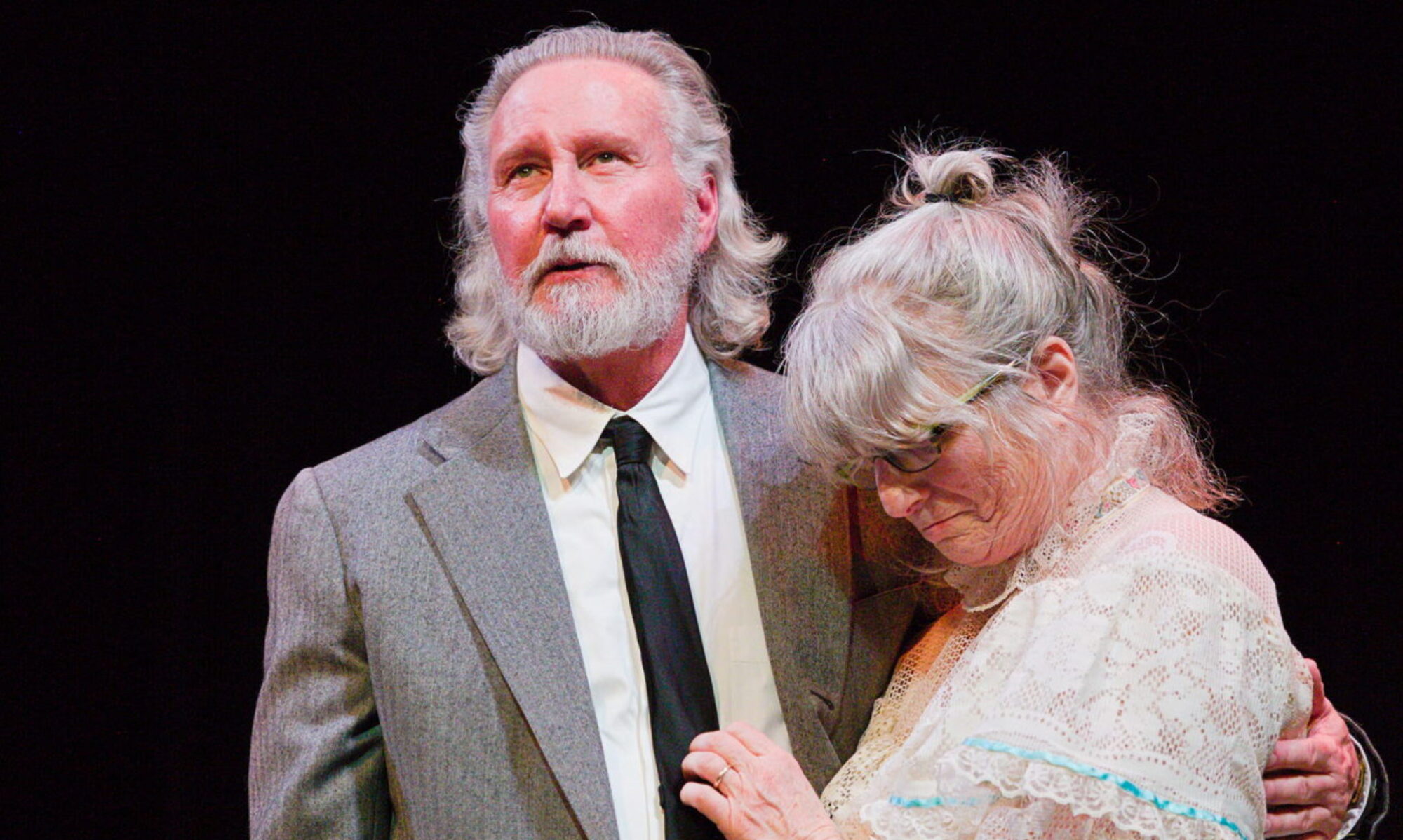





This evening may have seemed confusingBut our hope is you found our play amusingAnd we are sure that you will understandIf now and then a scene got out of hand.


The Upstart Crow Theatre Company
Over 45 Years of Classical Theatre in Boulder, CO






This evening may have seemed confusingBut our hope is you found our play amusingAnd we are sure that you will understandIf now and then a scene got out of hand.
I learned the importance of knowing your cue, at a young age.
The show was Howard Richardson & William Berney’s Dark of the Moon. My mother was the stage manager, and as the show got close to opening, I would watch rehearsals with her every night. At the end of the first half she would call out, “Blackout!” to signal the actors that in a performance the lights would go out. Being a kid, I thought this was great fun, and I started shouting it with her every night.

Opening night I was in the audience, and when the first act ended, I yelled “Blackout!”

The lights were late.

Blood Wedding was our last production at the Free School. It was not just the sky-blue walls and the baptismal font on the stage that were hard to work into a set design. (The building had been built as a church.) It was not just the lack of parking at the corner of Broadway and Balsam. It was mostly the fact that the Free School—to its credit—hosted all sorts of community events, all valuable in themselves, but difficult to share the building with. It was hard performing a poetic medieval tragedy with a drum concert in the next room, for instance. The final blow was a cooking demonstration, during a performance of Blood Wedding, in the basement just below our theatre that filled the building with the delectable odor of various kinds of seafood: it was strong.

So, we became a traveling company. We performed wherever we could find space. Caligula was our next production and we did it in Theatre 300 in the University Theatre. It was a wonderful space but, unfortunately, only available to us for two weeks during Christmas vacation. That’s a good time to do The Nutcracker or A Christmas Carol, but Caligula lacks some of the wholesome, sentimental quality of most Christmas plays. It was not our best attended show.
Next was Shaw’s Arms and the Man, and we did that at St. Ambrose Episcopal Church in East Boulder.

Next: The Winter’s Tale and we found a great performance space for that: the Chautauqua Community House. That was our last show of our second season. We loved the space: theatre in the round with great acoustics and a full balcony. We opened season three in the same place with The Imaginary Invalid. We would happily have stayed there forever if we could, except for one small problem: The building was unheated. That was fine for Winter’s Tale performed in May and Invalid performed in September (actually not quite OK: we returned to Chautauqua for Heartbreak House in September of 1984 and once had to rent a propane heater to warm the room up before the performance. It didn’t.)

Next: A special event: We did a single performance of The Monkey’s Paw for a Halloween show at the Boulder Theatre.
Next: Our third church. We did Ibsen’s The Master Builder in the church hall at St. John’s Episcopal Church in Boulder. And our fourth church. We closed the show after three weekends at St. John’s and packed it up and took it to Denver for a weekend at the First Unitarian Church. That makes seven different theatres by the middle of our third season.

Next: The Rivals, and another church: The Unitarian Church in East Boulder.

Next: Back to Denver again. We entered a festival contest and performed a one-act: The Golden Fleece at the Denver Center for the Performing Arts. We didn’t win.
Then, back to St. John’s. We finished our third season with two more shows there: Macbett by Ionesco and Dark of the Moon, the American Appalachian classic. St. John’s became our home for the next couple of seasons.

Three seasons: Twenty productions; nine theatres. Some of us were younger then.